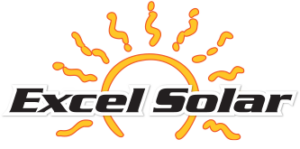Solar Power 101
Solar Power FAQ's
Solar energy uses the sun’s rays to create heat or electricity. It is an unlimited, renewable resource able to generate energy in a quiet, clean, and reliable manner. Here how it works:
- Sunlight hits the solar panels and generates an electric DC current.
- That current flows to the inverter, which converts it to an AC current for use in the home.
- The electrical panel then distributes this electricity throughout your home.
- Unused electricity flows back to the grid through the utility meter, adding credit to your bill.
This answer can vary depending on how much electricity you use and how efficient the appliances you operate are. In general, expect to generate excess electricity in the winter (when usage is lower), which can offset the energy you use from the grid in the summer.
Standard homeowner’s insurance policies typically meet electric utility requirements. Electric utilities usually require that homeowners who take advantage of net metering sign an interconnection agreement.
Solar photovoltaic (PV) panels require little maintenance – no need to wash or dust. It is, however, important to place panels where they’ll remain clear of shade and debris.
Yes, and we can help with 100% financing options. Please let us know you are interested in a payment plan and we can explain your options. Other options may include a home equity loan from your bank or rolling the cost into your construction loan on a new house.
To estimate how much a solar electric system may cost, determine your current energy needs and costs or your future anticipated use. Once you have a sense of how much energy you use, we can help you evaluate the cost and benefits of purchasing solar power. More
Planning, configuring, and ordering materials for your solar energy system can take up to a few weeks. We also get permits from the city and approval from your Homeowners Association. Sometimes those steps can take a month (or longer). The actual installation at your home can typically be completed in just a few days. There are then inspections that happen before we “flip the switch”…so the total project is anywhere between a few weeks and 2-3 months.
Net meters are digital displays that read power consumption and solar production.
What is a net meter? For more information, visit the 2020 Florida Power and Light (FPL) Net Metering | EnergySage



